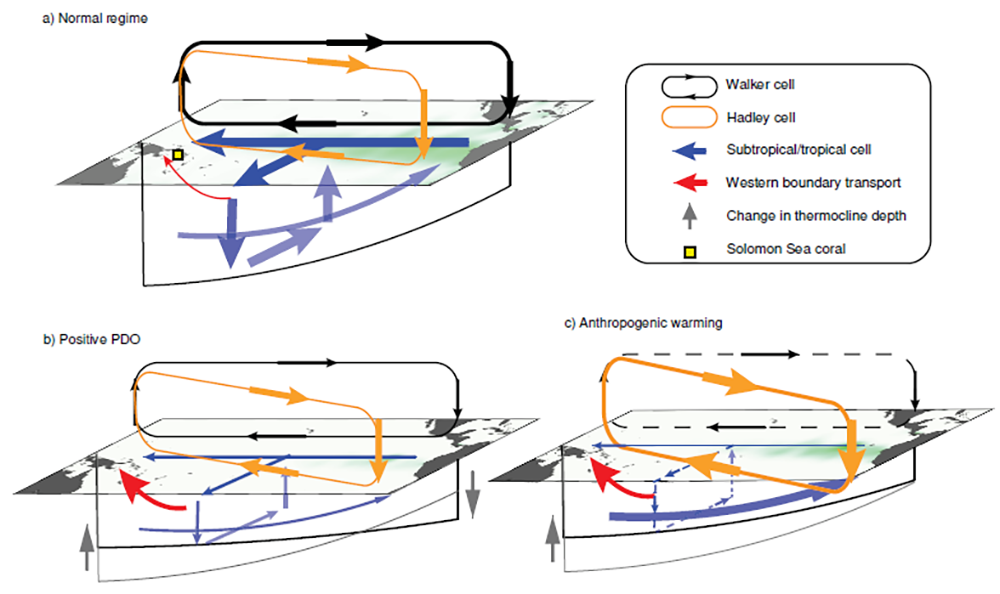


a, The STCs (blue arrows), Walker circulation (black arrows), Hadley circulation (orange arrows) and the LLWBC in the South Pacific (red arrow) are coupled processes. Green shadings represent the amount of nutrient upwelled and remaining at the surface of the CEP and EEP. b, The positive phase of the PDO is associated with a weaker Walker circulation, reduced equatorial winds and accompanied by weaker oceanic overturning circulation, flattened thermocline tilt and weaker upwelling in the CEP and EEP. The weaker trade winds, if not accompanied by changes in the subtropics, generate negative wind stress curl in the South Pacific, strengthening the LLWBC by Sverdrup transport. c, Schematic representation of projected changes associated with anthropogenic warming. Although the projected weakening in the Walker circulation and slowdown of the STCs are evident in most climate models, confidence in these projections is low (as indicated by dashed arrows) because of inconsistent signals in observations and model biases. Observations and models show a southward expansion of the Hadley cell and strengthening in the Southeasterly trade winds in the South Pacific, which would work to intensify the LLWBC transport as suggested by the long-term decline in the Solomon Sea CS-δ15N. Maps are generated with Ocean Data View.
The wind-driven meridional overturning circulation between the tropical and subtropical oceans is important for regulating decadal-scale temperature fluctuations in the Pacific Ocean and globally. An acceleration of the overturning circulation can act to reduce global surface temperature as ocean stores more heat. The equatorward low-latitude western boundary current represents a key component of the meridional circulation cell in the Pacific and a major source of water mass for the Equatorial Undercurrent, yet long-term observations of its transport are scarce.
In this study, we demonstrate that the 15N/14N ratio recorded by Porites spp. corals in the western tropical South Pacific is sensitive to the exchanges of water masses driven by the western boundary transport. Using a 94-year coral record from the Solomon Sea, we report that the 15N/14N ratio declined as the global surface temperature rose.
The record suggests that the South Pacific western boundary current has strengthened in the past century, and it may have contributed to the reported strengthening of the Equatorial Undercurrent. In addition, the 15N/14N record shows strong decadal variability, indicative of weaker equatorial Pacific upwelling and stronger western boundary transport when the eastern equatorial Pacific is in the warm stage of the Pacific Decadal Oscillation.
Key points
More information